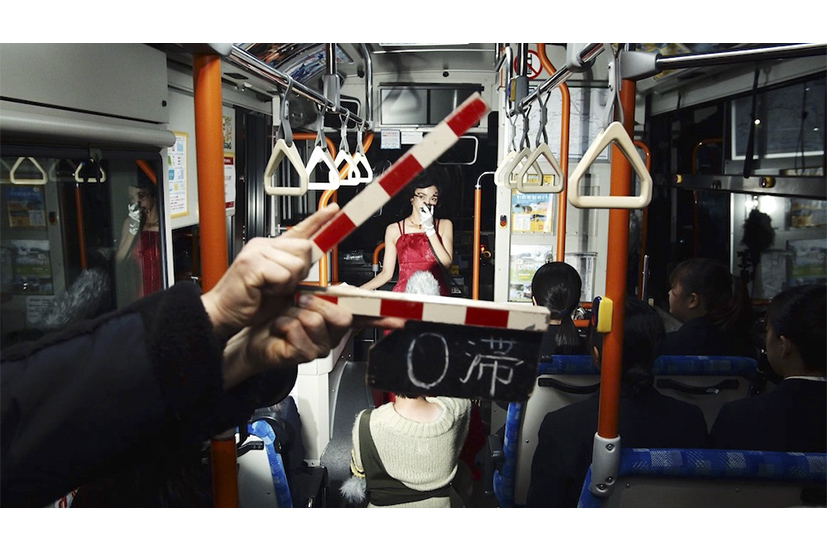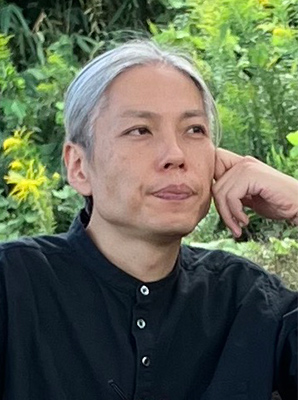Profile
Recent exhibitions and performances
- 2025 “Setouchi Triennale 2025 ‘The Voice and the Far’,” Oshima Port Area, Kagawa
- 2025 “I HEAR A NEW WORLD No.3,” Museum VILLA STUCK, Munich
- 2025 “Festival Archipel 2025,” Maison communale de Plainpalais, Geneva
- 2025 Solo Exhibition “Minato,” Shikanjima, Konohana-ku, Osaka
- 2024 “1995 ⇄ 2025 Our Lives from January 17, 1995,”
Hyogo Prefectural Museum of Art - 2024 “Humming Chorus,” Nam June Paik Art Center, Yongin, Korea
- 2024 Solo Exhibition “ARTIST in ARCADE vol.1: UMEDA Tetsuya ‘Timehon’,” Central Shopping District Arcade, Yamaguchi
- 2024 “Sanmu City Hyakunengo Art Festival ‘Tetsuya Umeda Performance’,” Chiba
- 2024 “Oscillation Festival,” Brasserie Atlas, Brussel
- 2024 Solo Exhibition “Mooring,” Udstillingsstedet Spanien 19c, Aarhus, Denmark
- 2024 “Hyakunengo Art Festival – Uchiboso Art Festival,” Chiba
- 2023 Solo Exhibition “wait this is my favorite part,” WATARI-UM, The Watari Museum of Contemporary Art, Tokyo
- 2023 “Oku-Noto Triennale 2023,” Suzu, Ishikawa
- 2022 “Takatsuki Art Time: Interlude,” Takatsuki Modern Theatre, Osaka
- 2022 “Reborn-Art Festival 2021-2022,” Ishinomaki, Miyagi
- 2022 “Kyoto Experiment: Kyoto International Performing Arts Festival 2022,” Former Welfare Center, Kyoto Chuo Shinkin Bank
- 2021 Solo Exhibition “Tetsuya Umeda in BEPPU ‘0 Tai’ Reopening,” Beppu, Oita
- 2020 Solo Exhibition “Tetsuya Umeda in BEPPU ‘0 Tai’,” Beppu, Oita
- 2020 “Saitama Triennale 2020,” Former Omiya ward office
- 2020 “PLAYTIME / PRAYTIME” (participated as composer and director), Bunkamura Theatre Cocoon, Tokyo
- 2019 Solo Exhibition “On the origin of voices,” Fukuoka Art Museum
- 2018 “Taiwan East Coast Land Arts Festival 2018,” Taidong, Taiwan
- 2018 “Performing Arts Meeting in Yokohama 2018,” Kanagawa Arts Theatre
- 2017 “Sapporo International Art Festival 2017,” Kinichikan Bldg. / Ringo
- 2017 “Kunstenfestivaldesarts 2017,” Brussels
- 2016 “Seven Ships,” Higashi-Yokobori River – Dotonbori River ‒ Kizu River, Osaka
- 2016 Solo Exhibition “See, Look at Observed what Watching is,“ PICA/ Portland Institute for Contemporary Art, USA
Awards
- 2024 “The 74th Minister of Education Award for Fine Arts,” The New Face Award
Umeda produces installations that are inspired by and incorporate existing elements found in the environment and circumstances surrounding the exhibition space including its architectural structure. In addition to exhibitions in museums and art institutions, he has produced numerous site-specific works based on the context of both urban spaces and the natural environment. Performance works are presented in Japan and abroad, such as tours inviting the audience to unfamiliar places, stage works focusing on functions found in theaters, and chorus projects without a center point. He is also internationally renowned as a leading artist in the field of sound art.
Comments from the Chair of the Selection Committee
Despite the fact that many of the artists employ digital media including photography and video, there was, unfortunately, little surprise in their media choices, methodology, or methods of display. Many of the submitted applications demonstrated that the applicants’ motivations stemmed from personal questions of nationality, attributes, and gender identity, and their works present strong aspirations to extend their own motivation to other individuals, collective history, and experiences. We were also impressed with the artists’ dedicated efforts to build trust and cultivate relationships over time with those who are involved in the work during the production process. The issues of minorities and migration are intrinsically tied to the history and geopolitics of respective places. On the other hand, these are not issues particular to Japan but are omnipresent. Thus, addressing these issues has a strong potential to illuminate and share universal problems or overarching locally rooted problems for further discussion with people who do not share a Japanese context.
TAKAHASHI Mizuki
[Executive Director and Chief Curator, Centre for Heritage, Arts and Textile (CHAT)]
Reasons for the Award
Umeda Tetsuya has been highly commended for his deep insight into the geopolitical and environmental aspects of the locations where he showcases his work. He skillfully translates these insights into his unique artistic language, elevating them into compelling art pieces. Umeda adeptly handles complex themes such as history and systems, employing expressions that rely on human sensory trust. His work is both poetic and lyrical, demonstrating a remarkable talent for interpreting and creatively transforming the physical constraints of space. Evincing an ethical approach, Umeda’s work is focused on enhancing the viewer’s experience and is characterized by meticulously crafted, intimate mechanisms that encourage viewers to engage with the space spontaneously. His ability to weave these elements into a coherent narrative through cross-disciplinary storytelling, grounded in a profound understanding of visual culture, is particularly noteworthy.











